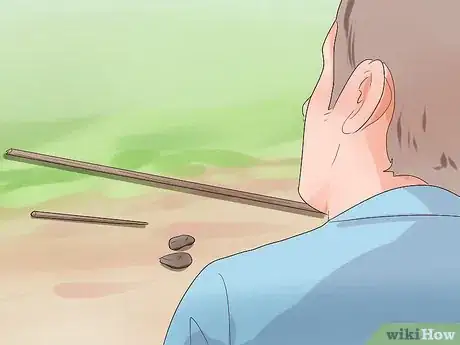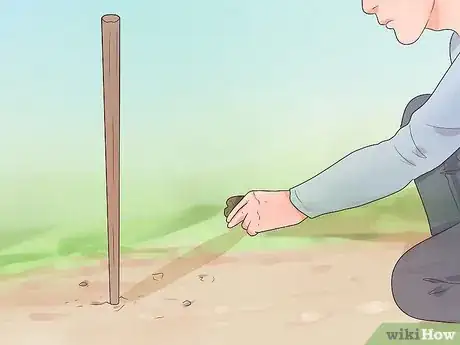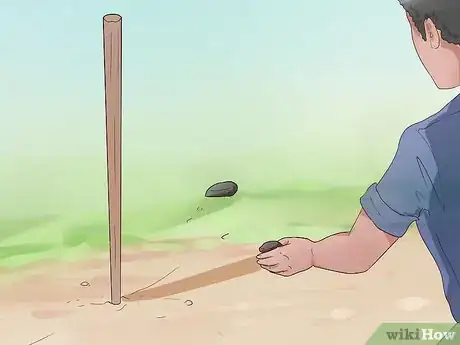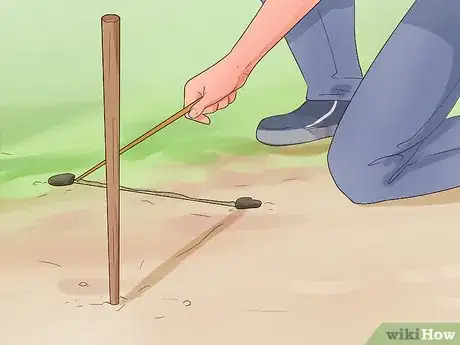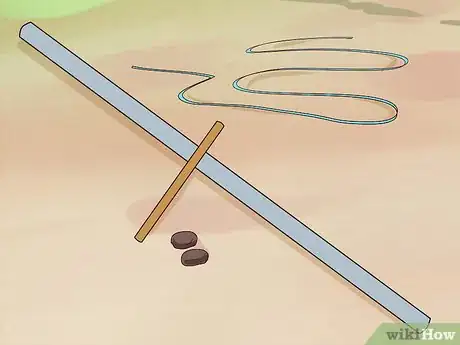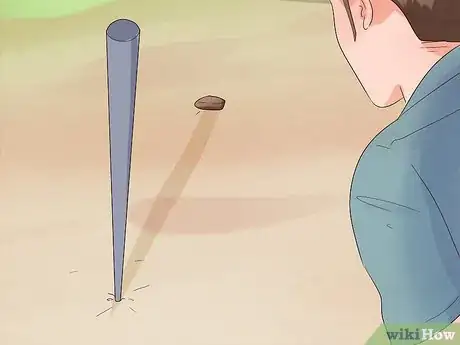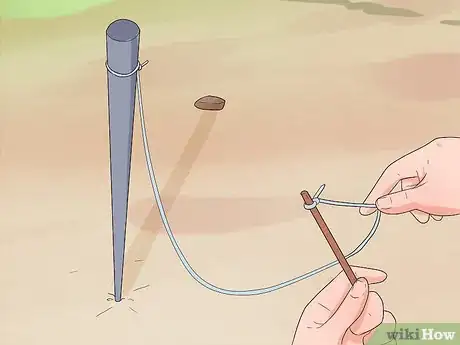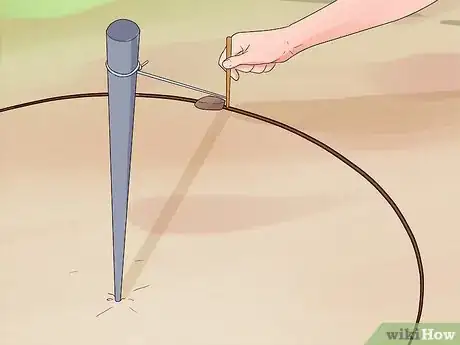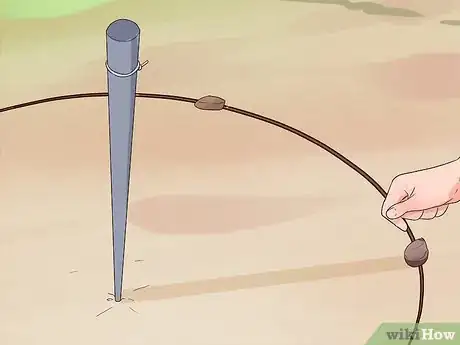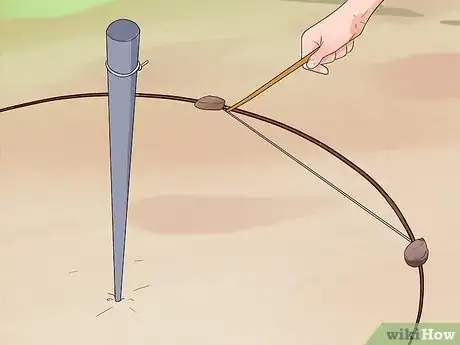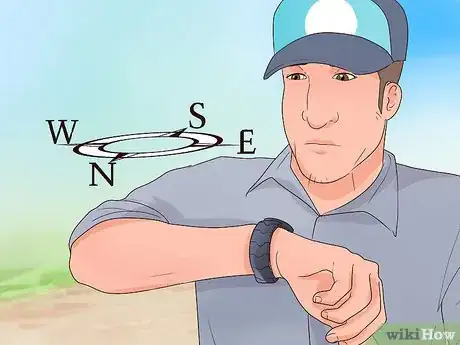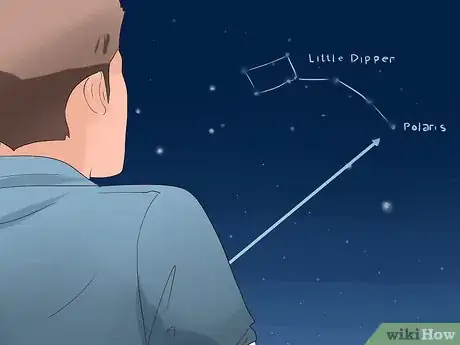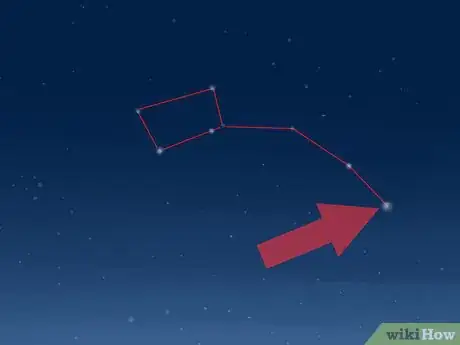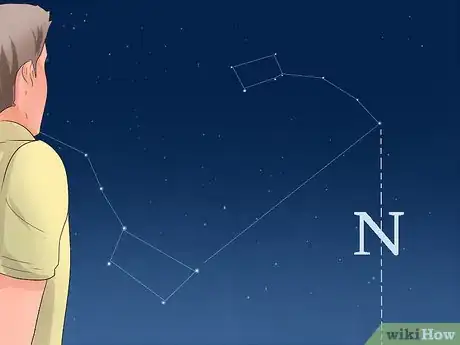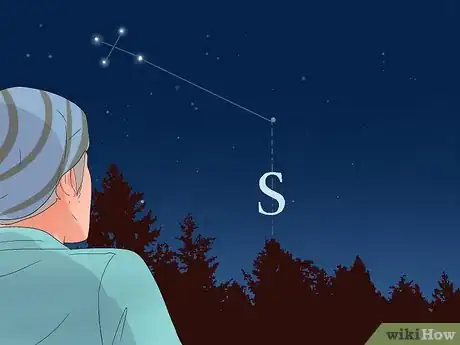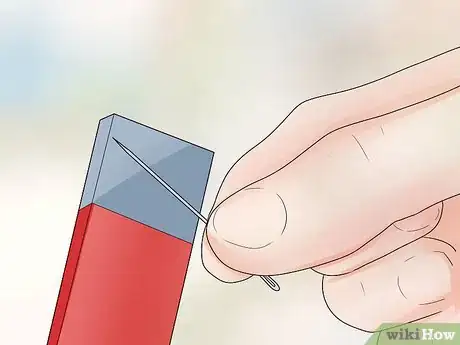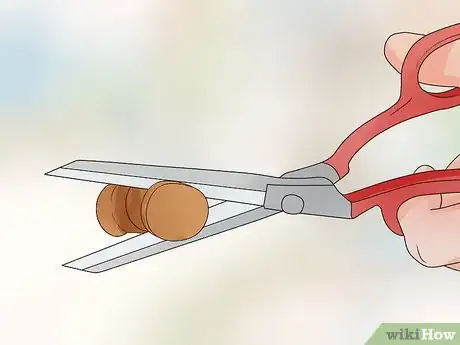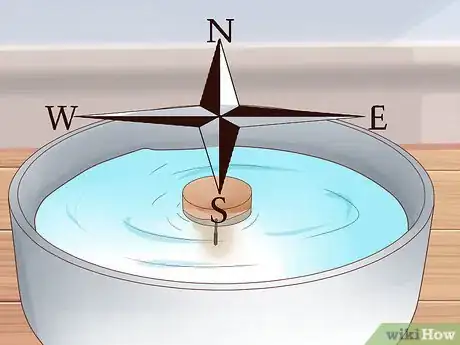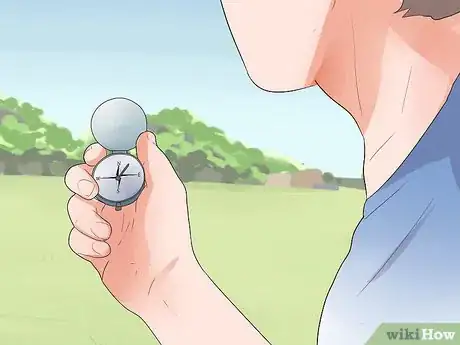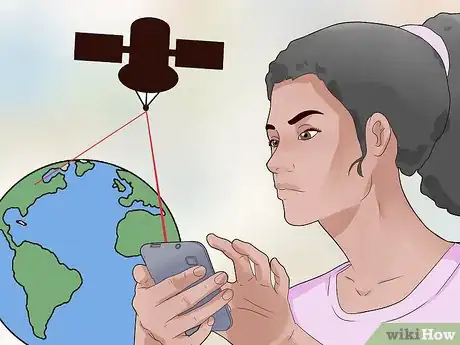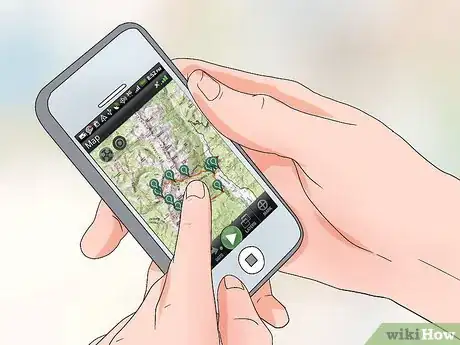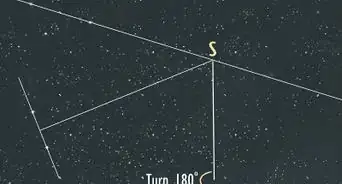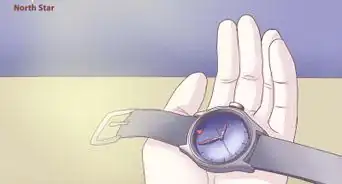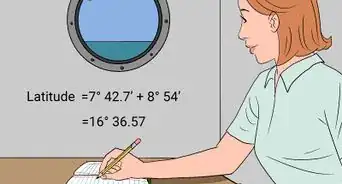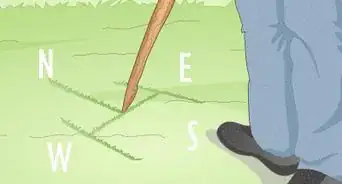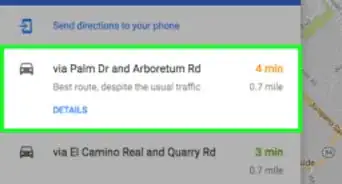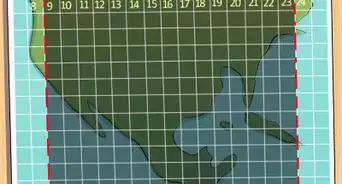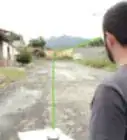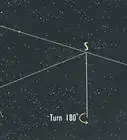This article was co-authored by Josh Goldbach. Josh Goldbach is an Outdoor Education Expert and the Executive Director of Bold Earth Adventures. Bold Earth leads adventure travel camps for teenagers all over the world. With almost 15 years of experience, Josh specializes in outdoor adventure trips for teens both in the United States and internationally. Josh earned his B.A. in Psychology from Eckerd College in St. Petersburg, Florida. He’s also trained as a wilderness first responder, a Leave No Trace master educator, and a Level 5 Swiftwater rescue technician.
There are 12 references cited in this article, which can be found at the bottom of the page.
This article has been viewed 1,757,039 times.
Being able to determine the cardinal directions using various methods can help you win orienteering challenges, help you find your way if you’re turned around, or could even save your neck if you’re lost alone somewhere. There are some easy ways to figure out directions, but if you don’t have a compass or cell phone handy, you can still determine north, south, east, and west.
Steps
Shadow Stick
-
1Collect your tools. Since the sun rises in the east and sets in the west, the shadows it casts will always move in the opposite direction, and you can observe their motions to determine directions. For this method, you will need:[1]
- A straight stick that’s between two and five feet long
- A straight stick that’s about one foot long
- Two rocks, stones, or other objects (heavy enough that wind won’t blow them around).
-
2Plant your stick upright in the ground. Place one of the rocks on the ground to mark the tip of the stick’s shadow.Advertisement
-
3Wait 15 to 20 minutes. The shadow will have moved. Take the second rock and mark the new location of the tip of the stick’s shadow.
- If you can wait longer, do so, and place more rocks to mark the changing shadow.
-
4Connect the dots. Either draw a straight line on the ground between the two marks or use the other stick to connect the dots and make a straight line. The shadow moves in the opposite direction of the sun, so this line denotes the east–west line: the first dot represents west and the second dot represents east.
- Note that this method is only approximate, and can be off by 23 degrees or so at the equator on the first day of winter or summer. The variance will be more the farther you get from the equator. For instance, the sun will rise about 33 degrees north of east on the first day of summer at 42 degrees latitude in the northern hemisphere and 33 degrees south of east on the first day of winter. It rises due east on the first day of spring and fall all over the world. [2]
If you don't remember the order of directions, start with North and go clockwise, using this mnemonic:
Never Eat Soggy Waffles.Alternatively, picture a clock with North at 12:00, East at 3:00, South at 6:00, and West at 9:00.
Shadow Dial
-
1Assemble your tools. This method is similar to the stick method, but it’s more reliable partly because it uses a longer observation time, but mostly because it uses equal times before and after local noon. Locate flat ground and collect your tools:
- A stick or pole that’s two to five feet long
- One small sharp stick
- Two small rocks
- Something like a long string
-
2Put the long pole in the ground. This must be done before noon. Wherever the shadow of the pole ends, place a rock.
-
3Attach the string to the stick and pole. Tie the sharp stick to one end of the string, and the other end of the string to the pole, making sure it’s just long enough to reach the rock on the ground. With this method it is important that the top of the stick, the part that casts the shadow, is directly over the part of the stick that is in the ground.
-
4Draw a circle around the pole. With the rock as your starting point, use the sharp stick that's attached to the pole to draw the circle in the ground around the pole.
-
5Wait. When the shadow from the pole finally touches this circle again, mark the point where it connected with the other rock.
-
6Connect the dots. The straight line that connects the first rock with the second rock is the true east–west line, where the first rock represents west and the second rock represents east.[3]
- To find north and south from this point, north will be ninety degrees clockwise from west, and south will be ninety degrees clockwise from east.
-
1Look for the sun at noon. At noon, the sun can point you in the general direction of north and south, and consequently east and west, but it will not tell you due north or due south. In the Northern Hemisphere, walking directly toward the sun at noon will lead you south, while walking directly away from the sun will lead you north. In the Southern Hemisphere, the opposite is true: toward the sun will lead you north, and away from the sun will lead you south.
-
2Use sunrise and sunset for approximate directions. The sun rises in the general direction of east and sets in the general direction of west every day, so you can use the location of sunrise or sunset to get an approximate idea of direction. Face the sunrise and you are facing east; north will be on your left and south will be on your right. Face the sunset and you are facing west; north will be on your right and south will be on your left.
- The location of sunrise and sunset only provide an approximate idea of direction 363 days of the year, because the sun rises due east and sets due west only on the vernal and autumnal equinoxes (the first day of spring and fall).[4]
-
3Look at how vegetation is growing. While using vegetation to determine direction isn’t an exact science or a precise method, oftentimes it can give you a basic idea of which direction’s which. Living north of the equator, the sun is usually in the southern part of the sky, and the opposite is true south of the equator. This means that leaves and foliage will tend to be thicker and denser on the southern side of a tree or bush.[5] The opposite is true in the Southern Hemisphere, where vegetation will be more lush on the northern side.
- Many guidebooks will note that moss only grows on the north side of a tree in the Northern Hemisphere, but this is not true. However, while moss can grow on all sides of a tree, it is true that it will often be denser on the side that is shadier (the north in the Northern Hemisphere and the south in the Southern Hemisphere).
-
4Calculate direction with an analogue watch and the sun. The sun can be used in conjunction with a non-digital wristwatch to provide an approximate idea of the cardinal directions if you find yourself lost in the woods but at least have a wristwatch. In the Northern Hemisphere, point the hour hand on your watch at the sun. South will be halfway between 12 o’clock and the hour hand.[6] In the Southern Hemisphere, align 12 o’clock on the watch with the sun, and the midway point between that and the hour hand will point north.[7]
- When you are facing north, east is on your right and west is on your left. When you are facing south, east is on your left and west is on your right.
- During daylight saving time, use one o’clock instead of 12 o’clock on the watch.[8]
- For this method to work, your watch must be set for the correct time. It can also have a margin of error of about 35 degrees, so this method is only reliable for an approximate idea of direction.[9]
-
1Recognize Polaris. Polaris, also called the North Star, can be used in the Northern Hemisphere to help you find north. This is one of the quickest ways to determine your directions at night if you don’t have a compass or GPS.
- Polaris, or the North Star, is not one of the brightest stars in the night sky (it clocks in at 48th brightest). It is, however, the brightest star between the Big Dipper and Cassiopeia. Because it’s located in the sky around the North Pole, it doesn’t move around much, meaning it’s useful and accurate for navigating.
-
2Locate Polaris. Find the Big Dipper (also known as the Plough) and the Little Dipper (aka Ursa Minor). Think of the Big Dipper like a ladle (hence the name), where the handle holds a cup, and the outer edge of the cup (the farthest from the handle) points out into the sky and toward Polaris. For confirmation, Polaris is the last star that makes up the handle of the Little Dipper.[10]
-
3Draw an imaginary line from Polaris to the ground. This is approximately true north. When you face Polaris, you are facing due north; behind you is due south, and due west will be on your left, while due east will be on your right.[11]
-
1Recognize the Southern Cross. In the Southern Hemisphere, the constellation of the Southern Cross (aka Crux) can be used to guide you in a southerly direction. Five stars make this constellation, and its four brightest form an angled cross.
-
2Use the Southern Cross to find south. Find the two stars that make up the lengthwise portion of the cross and imagine a line that extends out four and a half times greater than the full length of the cross.
- When you reach the terminus of that imaginary line, draw another imaginary line that extends to the ground. This is, in general, the direction of south. When the cross is lying horizontal, the "four and a half times" mark will be less than one degree from true south. When the cross is vertical or upside down, the mark will be about two and a half degrees (about a thumb's width) from true south. [12]
-
3Choose a guiding landmark. Once you’ve determined the general direction in which south lies, it might be helpful to find a landmark at that location on the ground so that you don’t lose where south lies.
Making Your Own Compass
-
1Gather your tools and equipment. A compass is a round instrument with all the cardinal directions printed on it. A rotating needle uses the Earth’s magnetic field to determine what direction the compass is facing. You can make your own rudimentary compass if you have a few items available. You will need:[13]
- A metal sewing needle and magnet
- A bowl or cup filled with water
- Pliers and scissors
- A cork (or just a leaf).
-
2Rub the needle against the magnet. Do this at least 12 times if you are using a weak magnet like a refrigerator magnet, or about five times if you have a stronger magnet. This will magnetize the needle.
-
3Cut a one-quarter-inch disk of cork. Then, use the pliers to push the needle through the cork disk. (If you don't have a cork, you can place the needle on a leaf.)
-
4Place the cork disk in the center of the bowl of water. The needle will be free to spin around like a compass needle, and will eventually align itself with the poles.
-
5Wait for the needle to stop spinning. If it was properly magnetized, it should tell you the north–south line. Note that unless you have a compass or other reference, you will not know if the needle is pointing north or south, just that it's pointing to one or the other.
- Many websites and books say that you can magnetize a metal needle by rubbing it with wool or silk, but that will only create static electricity, not magnetism.
Determining Direction With Magnetic or Electronic Devices
-
1Find your direction with a compass. Day or night, using a compass, GPS, or cell phone equipped with either is the best and easiest way to determine directions. These devices are also the most accurate, making them the most reliable methods. But, it’s important to note that when your compass points north, for instance, it’s pointing you in the direction of magnetic north, which is different from true north (the same goes for magnetic south versus true south).[14]
- As you spin around in different directions, the compass needle will spin as well, indicating which direction you are facing.
- A compass will give false readings around metal objects like keys, watches, and belt buckles. The same is true for magnetic objects, such as certain rocks or power lines.
-
2Use a global positioning system. A GPS is arguably the easiest way to determine direction or find your way, because these electronic devices use satellites to position your location. A GPS can be used to tell you where you are, give you directions to a specific location, and track your movements.[15] A GPS must be charged and have a working battery to be functional. It should also be initialized before use, so that it orients itself (knows where it is) and downloads the most current and accurate maps.
- Turn on your GPS, and allow it to load and acquire signal.
- Not only will the GPS have a compass you can use to determine which way is east, west, north, or south, but on its map it will also have an arrow that points in the direction you are facing.
- Your coordinates will appear at the top of the screen, also giving you your longitude and latitude.
- Because a GPS navigates using satellites, tall buildings, large trees, and other geographic structures can interfere with its signal.
-
3Turn your cell phone into a navigation device. Most modern smartphones are equipped with a compass, GPS, or both. There are also applications you can download or software you can install to equip your phone with these features. To use the GPS function on your phone, it must be connected to Wi-Fi or your network, and your GPS or location services must be on.
- To access these devices, look for apps called “compass,” “maps,” or “navigation.”
Community Q&A
-
QuestionHow can I identify directions with a magnetic compass?
 Wildman5311Community AnswerThe needle will always point north. However, if you live in the Western U.S., the needle points a few degrees off of true north. This is due to the magnetic field wandering slightly.
Wildman5311Community AnswerThe needle will always point north. However, if you live in the Western U.S., the needle points a few degrees off of true north. This is due to the magnetic field wandering slightly. -
QuestionHow can I tell which direction I'm facing?
 Community AnswerRemember, the sun rises in the East and sets in the West. So, if you know the time of day, you can know your direction. If it is evening, for example, and the sun is setting, the direction of where the sun is is West, and the opposite of the direction the Sun is East. Depending upon where you're facing, you can determine North and South from this information. Remember, Never Eat Soggy Waffles for North, East, South, and West.
Community AnswerRemember, the sun rises in the East and sets in the West. So, if you know the time of day, you can know your direction. If it is evening, for example, and the sun is setting, the direction of where the sun is is West, and the opposite of the direction the Sun is East. Depending upon where you're facing, you can determine North and South from this information. Remember, Never Eat Soggy Waffles for North, East, South, and West. -
QuestionHow can I determine directions if I can't see the sky?
 Community AnswerLook for moss on the trees. In the Northern Hemisphere, usually moss grows on the south side of a tree because that's the side that gets the most sunlight. So when you can't see the sky, look for a couple of trees. If they all have moss on one side, you now where the South is.
Community AnswerLook for moss on the trees. In the Northern Hemisphere, usually moss grows on the south side of a tree because that's the side that gets the most sunlight. So when you can't see the sky, look for a couple of trees. If they all have moss on one side, you now where the South is.
References
- ↑ http://www.compassdude.com/no-compass.php
- ↑ http://www.wildwoodsurvival.com/survival/navigation/rbsolarnav/index.html
- ↑ http://www.learn-orienteering.org/old/nocompass1.html
- ↑ http://solar-center.stanford.edu/AO/sunrise.html
- ↑ http://www.naturalnavigator.com/find-your-way-using/plants
- ↑ http://www.armystudyguide.com/content/SMCT_CTT_Tasks/Skill_Level_1/land-nav-task-14-determin.shtml
- ↑ http://www.wilderness-survival.net/chp18.php
- ↑ http://adventure.howstuffworks.com/survival/wilderness/true-north2.htm
- ↑ http://www.wildwoodsurvival.com/survival/navigation/rbsolarnav/index.html
- ↑ http://earthsky.org/brightest-stars/polaris-the-present-day-north-star
- ↑ http://earthsky.org/brightest-stars/polaris-the-present-day-north-star
- ↑ http://www.wilderness-survival.net/chp18.php
- ↑ http://www.scientificamerican.com/article/steering-science-make-a-homemade-compass/
- ↑ http://adventure.howstuffworks.com/survival/wilderness/true-north.htm
- ↑ http://www.rei.com/learn/expert-advice/gps-receiver-howto.html
About This Article
To determine directions to North, South, East, and West, use the compass app or the GPS on your phone to see which direction you are facing. If you don't have your phone with you or want to use primitive methods, plant a stick upright into the ground. Then, place a rock where the stick's shadow ends to mark the spot. Wait 15 minutes and place another rock where the shadow is now. Connect the 2 rocks with a stick and this line will go from East to West, with the first rock being West. To learn how to make a shadow dial or compass to tell directions, read on!
